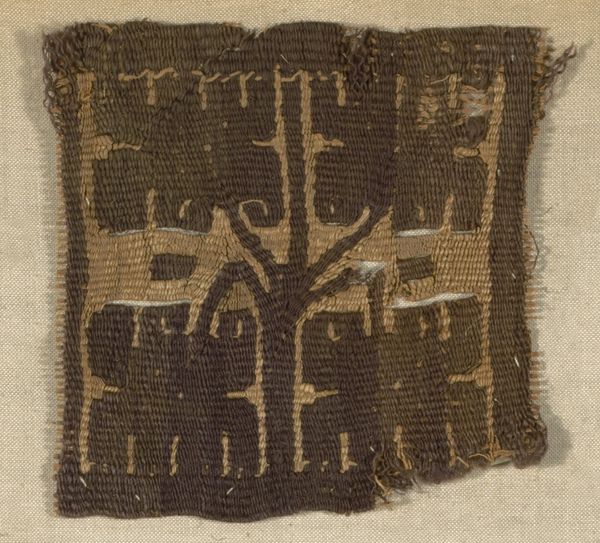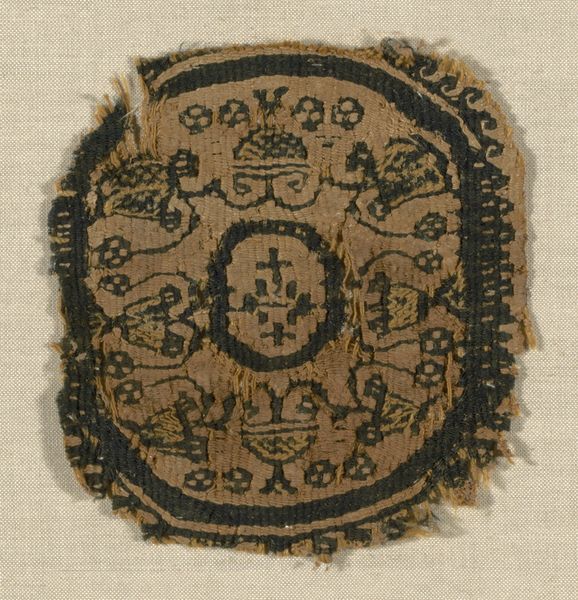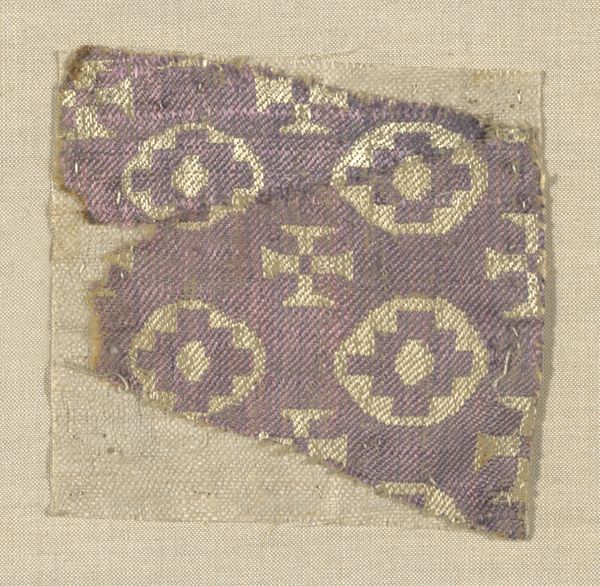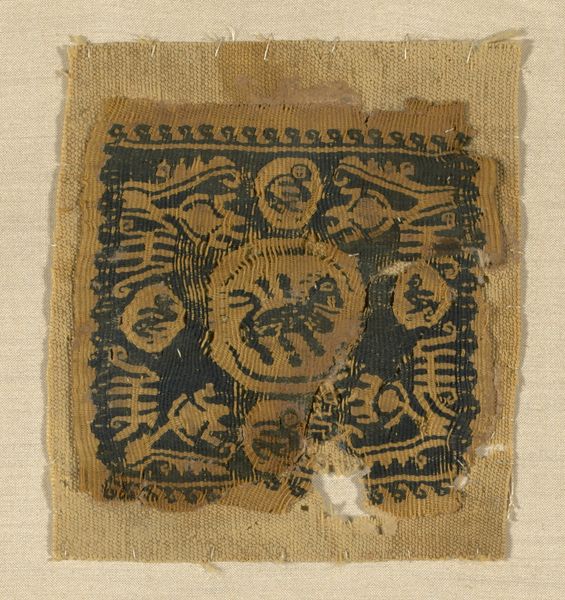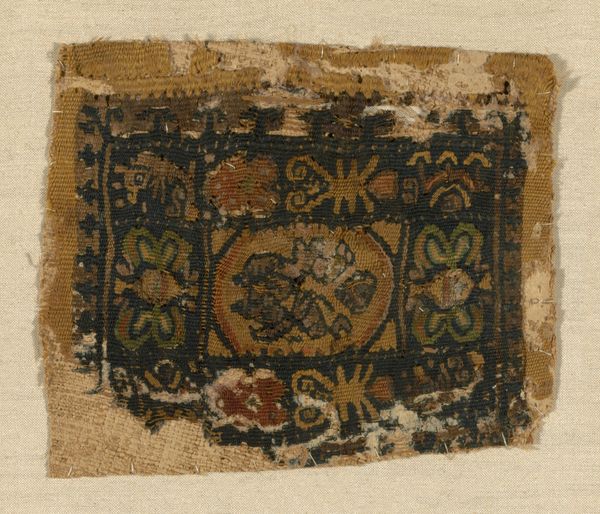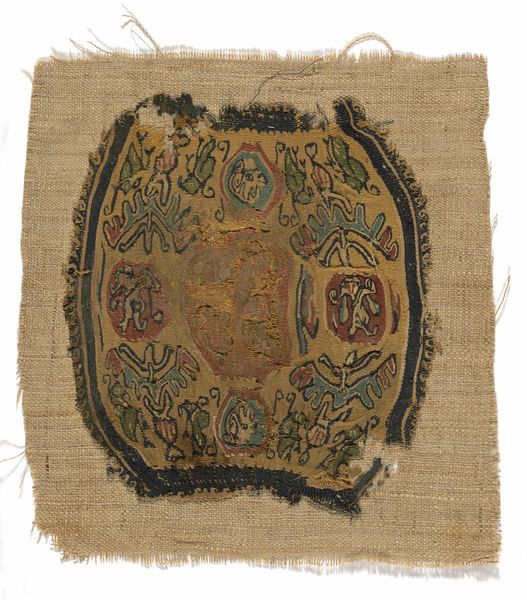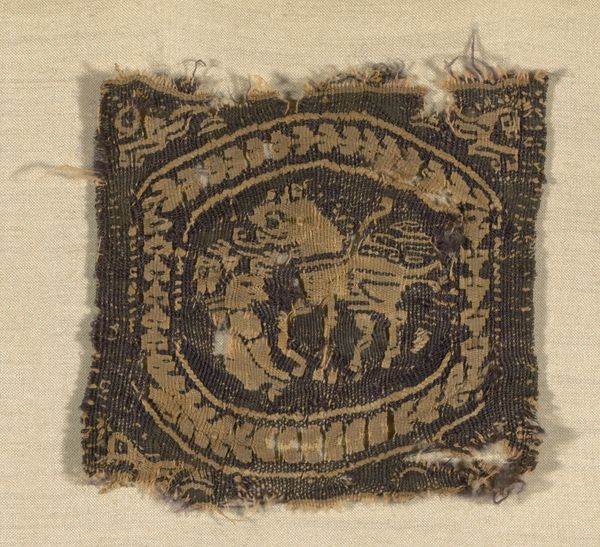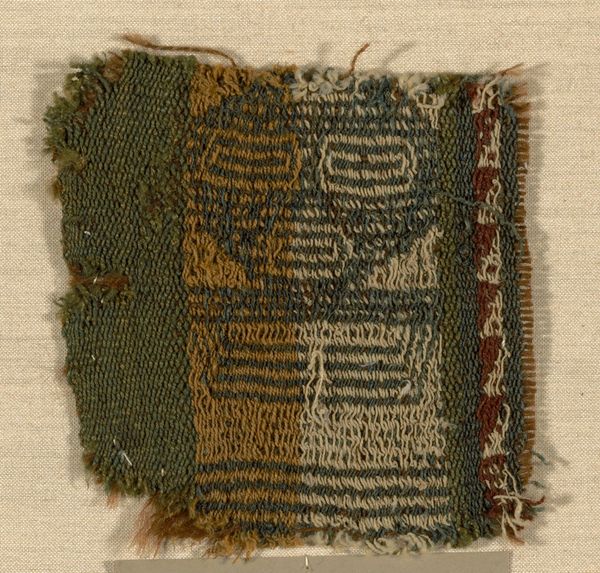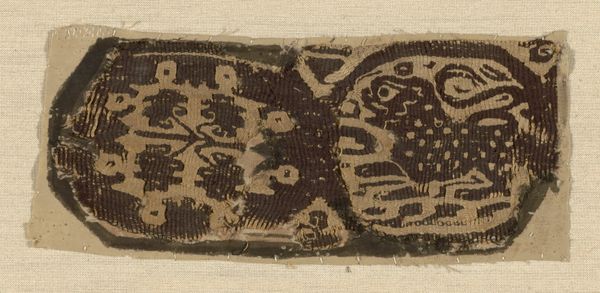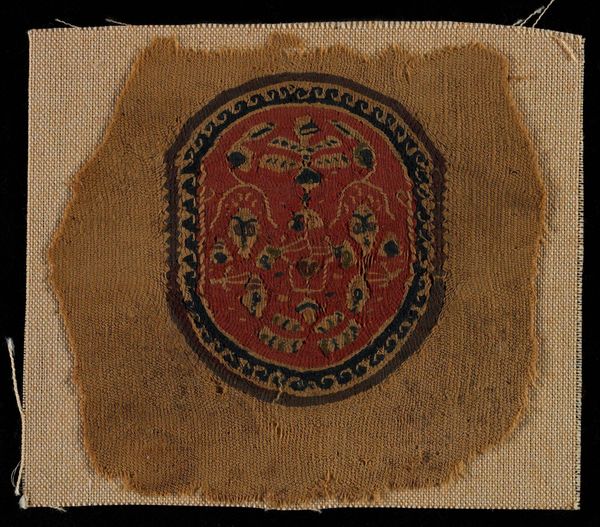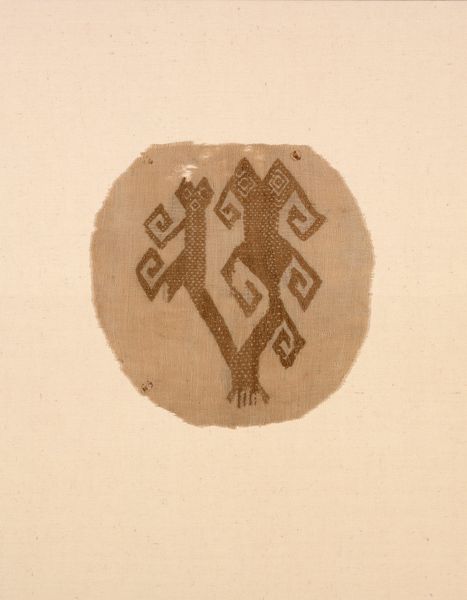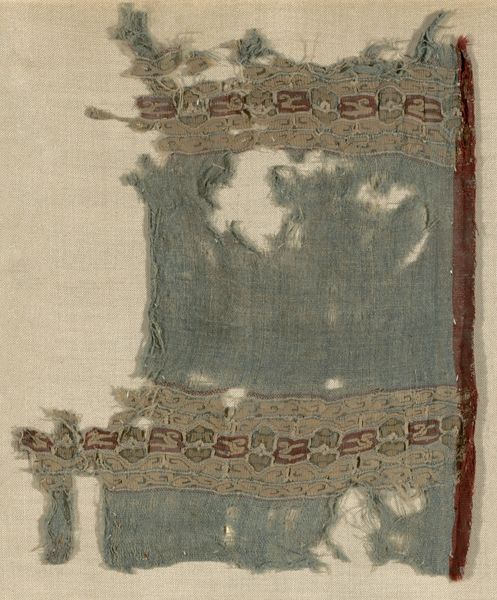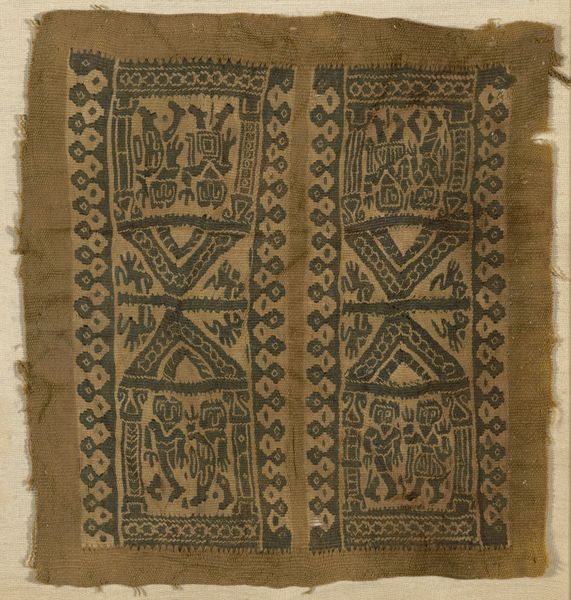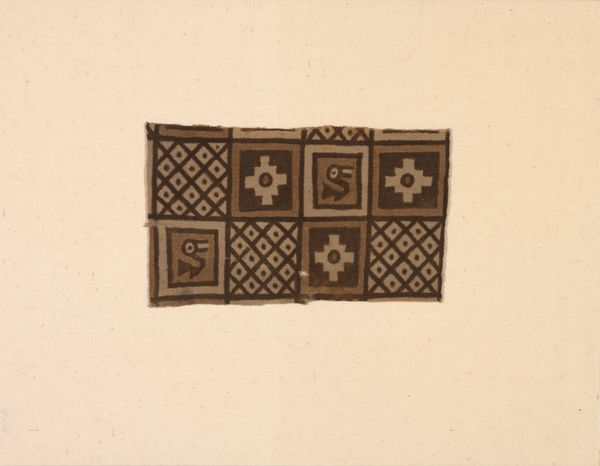
weaving, textile, wool
#
african-art
#
medieval
#
worn
#
weaving
#
textile
#
wool
#
form
#
geometric
#
abstraction
#
line
Dimensions: 8.6 × 7.9 cm (3 3/8 × 3 1/8 in.)
Copyright: Public Domain
This Fragment was made in Egypt by a Coptic artist using a tapestry weaving technique. The textile has a dense, sturdy feel, which speaks to the labor involved in its creation. The weaving process is slow and requires a high level of skill, and the all-over patterning suggests a deliberate and time-consuming approach. Notice the contrast between the dark background and the lighter motifs, including the prominent cross, which creates a visual depth. The material itself – likely wool and linen – also has a social context. These were common fibers in Coptic Egypt and their availability influenced the scale of production. It is a humble material, but the artistry elevates it. Looking at this fragment, it’s important to remember that textiles were not just functional objects but also carriers of meaning and identity. They played a significant role in Coptic society. Understanding the materials and making process gives us insight into the cultural and religious context of its creation.
Comments
No comments
Be the first to comment and join the conversation on the ultimate creative platform.
